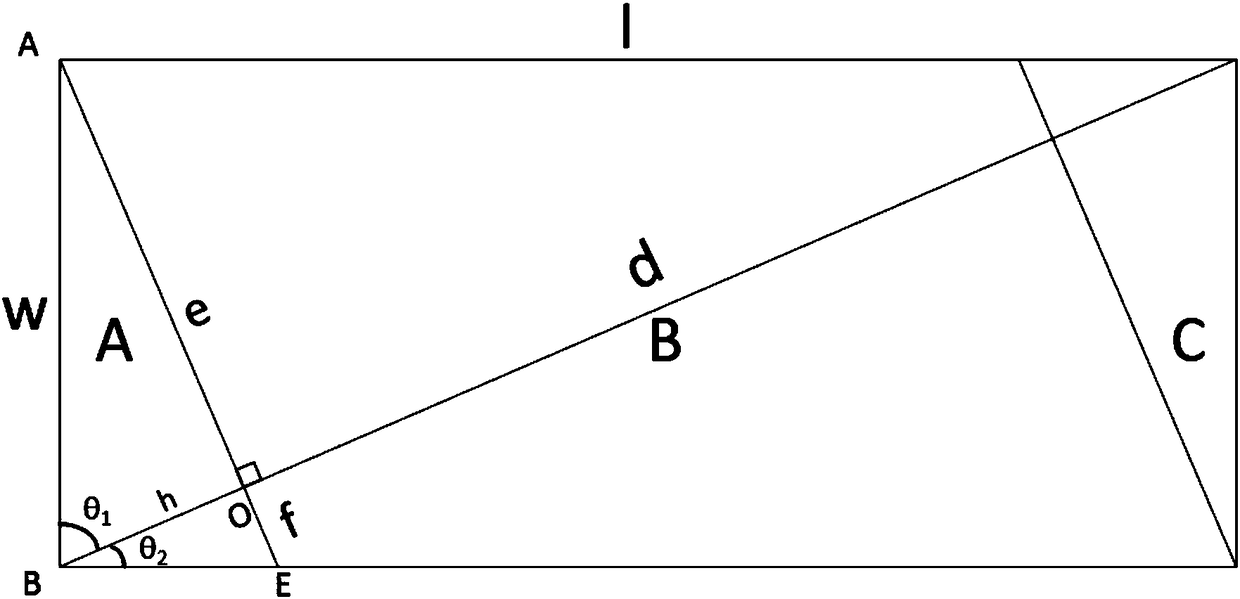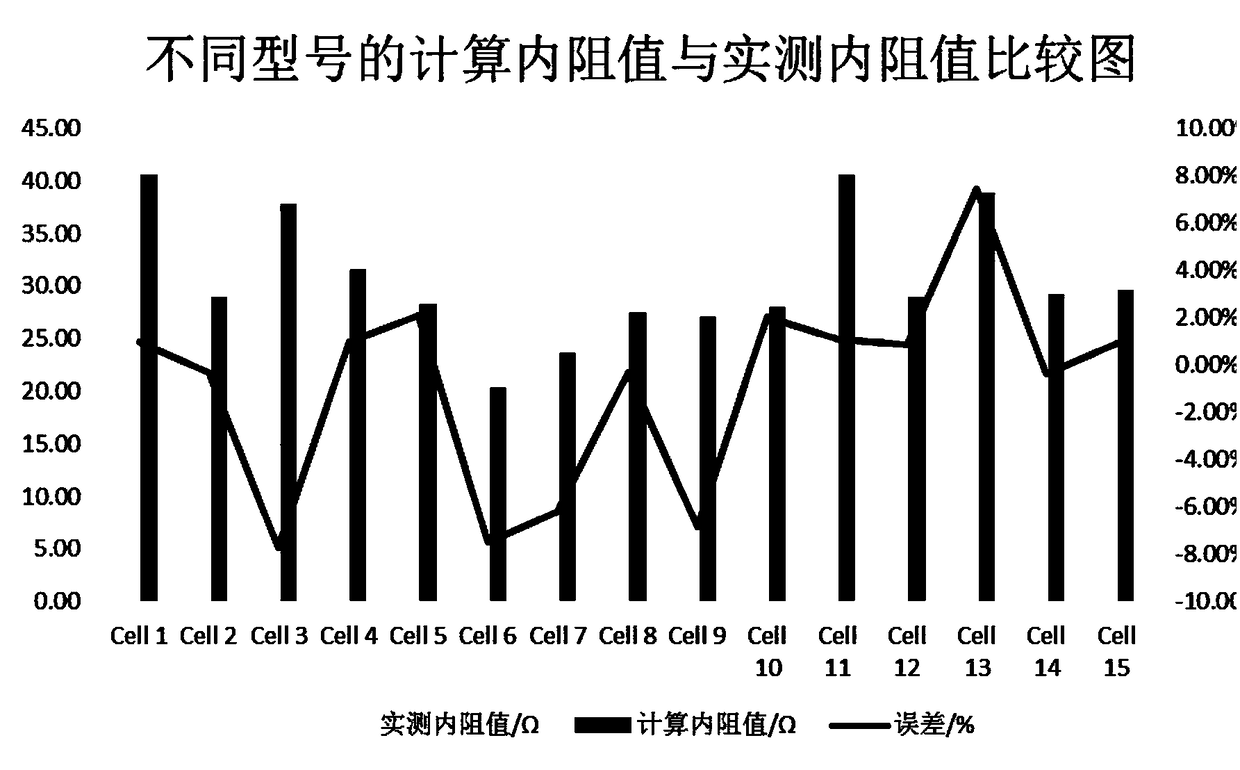Method for speculating polymer lithium ion battery AC internal resistance
A lithium-ion battery and AC internal resistance technology, applied in the field of electrochemistry, can solve the problems of low precision and large error, and achieve the effects of easy implementation, small error and simple calculation method
- Summary
- Abstract
- Description
- Claims
- Application Information
AI Technical Summary
Problems solved by technology
Method used
Image
Examples
Embodiment 1
[0045] 1) The basic information of polymer lithium ion battery cell 1 is as follows: the positive electrode is lithium cobalt oxide, the negative electrode is artificial graphite, the 4.4V system, the capacity is 2250mAh, and the external dimensions are thickness 3.7mm, width 66mm, and length 54mm. After preliminary design evaluation, the relevant information of the battery is shown in Table 1:
[0046] Table 1 Relevant design data sheet of cell 1
[0047]
[0048] 2) After investigation, the resistivity of aluminum foil Using the equivalent graph and the inference method established in the present invention, we get θ 1 positive =arccos(w / d)=arccos(46.7 / 757.4)=1.51; e positive =w*sinθ 1 =46.7*sin 1.51=46.61; h positive =w*cosθ 1 =46.7*cos 1.51=2.88; f positive =h 2 / e=2.88 2 / 46.61=0.18.
[0049] According to the guess formula
[0050]
[0051]
[0052]
[0053] Through the R of lithium cobalt oxide system polymer lithium ion battery 0 Carry out the correction to get the correc...
PUM
 Login to View More
Login to View More Abstract
Description
Claims
Application Information
 Login to View More
Login to View More - R&D
- Intellectual Property
- Life Sciences
- Materials
- Tech Scout
- Unparalleled Data Quality
- Higher Quality Content
- 60% Fewer Hallucinations
Browse by: Latest US Patents, China's latest patents, Technical Efficacy Thesaurus, Application Domain, Technology Topic, Popular Technical Reports.
© 2025 PatSnap. All rights reserved.Legal|Privacy policy|Modern Slavery Act Transparency Statement|Sitemap|About US| Contact US: help@patsnap.com



